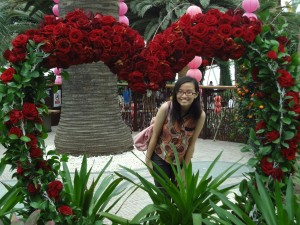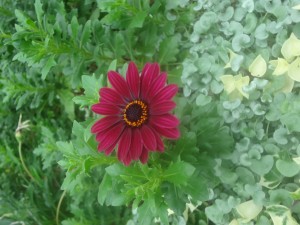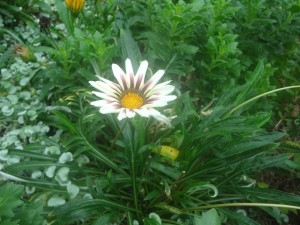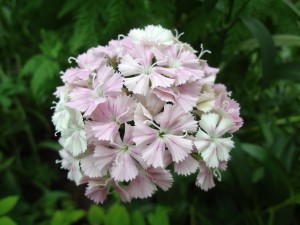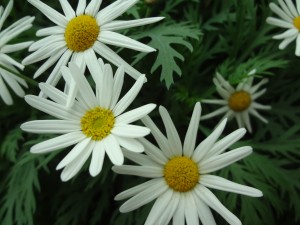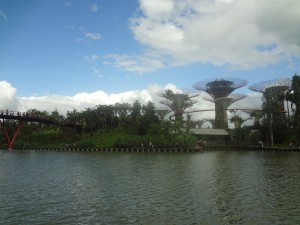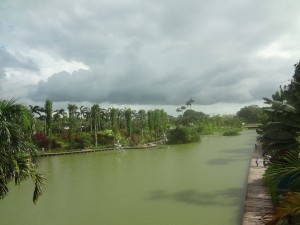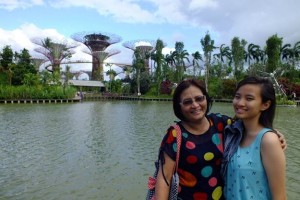One of the more important features about Gardens by the Bay is the creation of sustainability between social, economic and also environmental. In my blog, I will focus on the environmental sustainability aspects of Gardens by the Bay.
- Sustainable Energy Cycle
In order to maintain a cooled environment in the domes, the domes are equipped with the latest technology to provide energy-efficient solutions in cooling. Special glazing material is applied on the surface of the glasses of the domes to prevent heat from entering whilst allowing light to pass through.
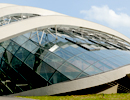
Moreover, as mentioned in the “About thedesign” tab, the conservatories have roofs that have retractable sails to provide the plants with shade. To lower the amount of air to be cooled, the strategy of only cooling the occupied zones through the process of thermal stratification where the cooling of ground is achieved by the chilled water pipes underneath the ground. To reduce the amount of energy needed, a process of dehumidification of air before cooling was carried out. This is done by using a drying agent called liquid desiccant which can be obtained from the recycling of waste heat through the burning of biomass. This burning of waste heat also generates energy that run the chillers and regeneration liquid desiccant. This co-generation of energy is sustained by Combined Heat Power (CHP) steam turbine from the waste generated from the other gardens.
Furthermore, rainwater is also collected by the domes and used for irrigation.This explains why the other gardens are also so important decreasing dependency for electricity. Such cooling techniques aim to save energy consumption by 30%. All these process can be better explained by the picture shown below:
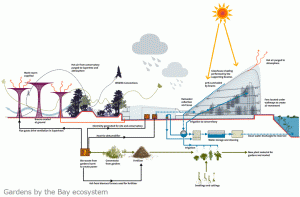
- Plants Biodiversity
Gardens by the Bay is one of the important platforms to conserve biodiversity. The Supertrees Grove alone houses over 162,900 plants which encompasses of almost 200 species of flowering climbers, orchids and ferns. Moreover, there are many respective gardens, as mentioned in the design, conserving biodiversity found in Singapore.
Through the different domes, they provide different climates for different plants and flowers from all over the world and thus, bringing conservation of biodiversity to a higher level. Under controlled temperature, not only will we be able to conserve plants and flowers found locally but also internationally. In the flower domes, there are many different types of flowers, varying from South Africa, California, Mexico, Australia, being showcased here. It has different sections in the domes like the baobabs, the flower field, the Australian garden and many more. (shown below)
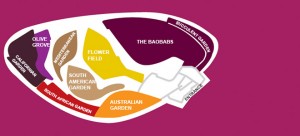
Retrieved from: http://www.gardensbythebay.com.sg/en/the-gardens/attractions/flower-dome.html#!/gardens
In the Baobabs and Bottle Trees region, it has different plants from the more African continents. Significant plants will include the largest tree within the dome called the African Baobab. From Western Africa, there are Drunken tree which has round trunks to store water and also Ghost tree from Madagascar which has medicinal properties. In the succulent garden, as the name suggests, it consists of many succulent plants like tree grape, wooly cactus and century plant of Maguey with their origin from different parts of the world like Nambia, Bolivia and Mexico respectively. In the Australian Garden, it showcases plants that have adapted long dry seasons and fires from Western and South Australia. This includes the Queensland Bottle Tree, Kangarro’s Paw and the Grass Tree. Plants from the South African Garden mainly have needle-like leaves that form thickets of fire-prone and also hard0leaf shrubs in order to grow in dry season and low-nutrient soil in Africa. This includes Aloes, King Sugar Bush and Bird of Paradise. South American Garden on the other hand has exotic plants from Central Chile like Chilean Wine Palm, Chilean Puya and Monkey Puzzle tree. The California lilac, Manzanita and other flowering plants can be found in the Californian Garden while the Stone Pine, Cork Oak, Dragon Tree and plants from the Mediterranean Basin can be found in the Mediterranean Garden. Olive trees and figs can, then, be found in the Olive Grove. Some of such plants are very rare and thus, Gardens by the Bay provides a platform for conservation of such rare paltns. Here are some of the pictures I took in my last visit to the domes:
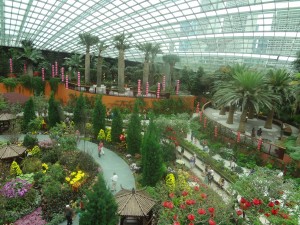
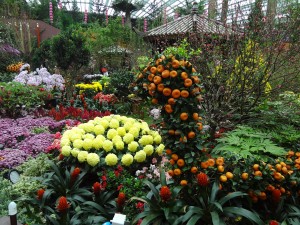
The Cloud Forest, on the other hand, has a narrower width but taller in height. Its structure within is also different.

Although the Cloud Forest do not have as many varieties of flowering plants, it consists of many other ferns and non-flowering plants. It consists of Tassel Fern which is a type of fern that reproduces by minute spores being carried away by the wind. In the Lost World, one of the carnivorous plants that can be commonly found in the Cloud Forest is the Pitcher’s Plant which leaves will attract, kill and digest insects and small animals. The most significant feature of the Cloud Forest is the largest indoor waterfall which stands on a height of 35 m and it is called the “Cloud Mountain”. The Cloud Walk will display a closed up view of plants species at the side of the mountain while the Cavern shows a species of plants that do not live on soil but other plants. One of the most interesting features in the Crystal Mountain is the view of real stalacities and stalagmites. Finally, the Secret Garden has a range of ferns, begonias, peperomias and other moisture-loving plants which are increasingly rare in the world. Therefore, being carefully maintained and in controlled temperature allows them to grow optimally and thus, conserving their species.

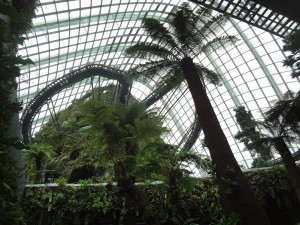
- Sustaining water cycles
Dragonfly lake is one of the first things you will notice the first thing you visit Gardens by the Bay. With the 440 m boardwalk spanning along the Dragonfly Lake, a walk along the boardwalk allow the public to discover biodiversity from fish to aquatic plants. As an extension from Marina Reservoir, these lakes act as a natural filtration system for water from the Gardens catchments and provides aquatic habitat to fishes and dragonflies. Filter beds with the presence of aquatic reeds are also located near to the entrance and exit of the lake system to filter water run-off. The aquatic plants and reed beds absorb nutrients like nitrogen to minimize the formations of algae and thus, better quality of water. With better quality of water, it will thus support the ecosystem in the lakes. According to NParks, these lakes are one of the few in Singapore that the biodiversity of dragonflies.
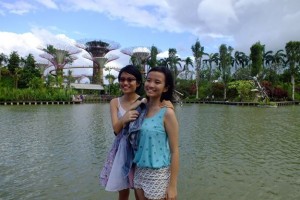
- Heritage Garden
One of the goals for “City in a Garden” is to protect our natural heritage like the one in old Singapore. Gardens by the Bay has horticulture gardens around to sustain our natural heritage. In the Heritage Garden, each garden consists of the different plants used by different cultures. In the Indian Garden – a Reflection of Devotion, it has plants like the Asian Palmyra Pam in which its edible nuts can be made into food and drinks while it’s trunks and sheath and leaves are used for construction. They also have plants like the Forbidden Fruit of India which is used for medical purposes and Indian culture and the Banyan Tree which is the National Tree of India, symbolizing eternal life. In the Chinese Garden, it represents “A Reflection of Literature”. Most of the plants like Pine, Chinese Pistache and King Sago Cycad have their own symbolic meaning like persistence, happiness and longevity respectively.
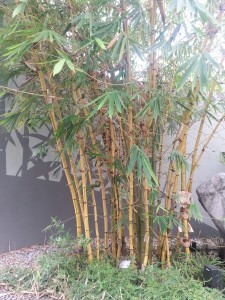
Moving on to the Malay Garden – A Reflection of Community, most trees found are used as food or medicinal purpose like the Bread Fruit Tree, Star Fruit and the Tongkat Ali. Lastly, the Colonial Garden as A Reflection of Ambition. It displays plants that were found during the spice trade when Singapore was position as the Spice Route. It displays plants like rubber, cocoa and oil palm which were used to boost the economy.

